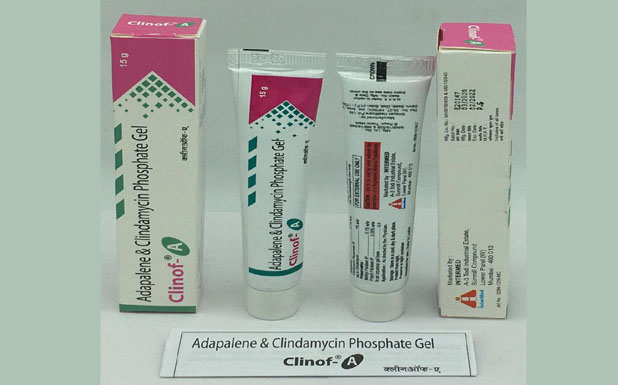The combination consist of a third-generation topical retinoid “Adapalene” and a semi-synthetic lincosamide antibiotic “Clindamycin”. It is a topical formulation used for the treatment of acne vulgaris. The term Acne vulgaris refers to the more common form of acne, consisting of non-inflammatory and mild inflammatory lesions. The more severe form of acne is characterized by the presence of nodules.
Adapalene 0.1%w/w
Clindamycin Phosphate 1.% w/w
Gel
For Derma Care

The combination consist of a third-generation topical retinoid “Adapalene” and a semi-synthetic lincosamide antibiotic “Clindamycin”. It is a topical formulation used for the treatment of acne vulgaris. The term Acne vulgaris refers to the more common form of acne, consisting of non-inflammatory and mild inflammatory lesions. The more severe form of acne is characterized by the presence of nodules.
Adapalene is a third-generation topical retinoid is chemically stable but photosensitive. Adapalene is used for the treatment/maintenance of mild-to-severe acne (acne vulgaris). Adapalene binds to retinoic acid receptor (RAR)-beta and RAR-gamma; this complex subsequently binds to the retinoid X receptor (RXR), which itself is capable of binding DNA to modulate transcriptional activity. Although the full extent of transcriptional modulation is not described, retinoid activation is generally known to affect cellular proliferation and differentiation, and adapalene has been shown to inhibit HeLa cell proliferation and human keratinocyte differentiation. These effects primarily account for adapalene's comedolytic and anticomedogenic properties. Clindamycin Phosphate is a semi-synthetic lincosamide antibiotic. Clindamycin inhibits bacterial protein synthesis by binding to 23S RNA of the 50S subunit of the bacterial ribosome. It impedes both the assembly of the ribosome and the translation process. Clindamycin impairs peptide chain initiation and may stimulate dissociation of peptidyl-tRNA from bacterial ribosomes.
The product is possible safe for most adults. There is no disadvantage associated with the product if taken under the recommended usage however burning, itching, dryness, redness and oily skin can be observed in some patients.